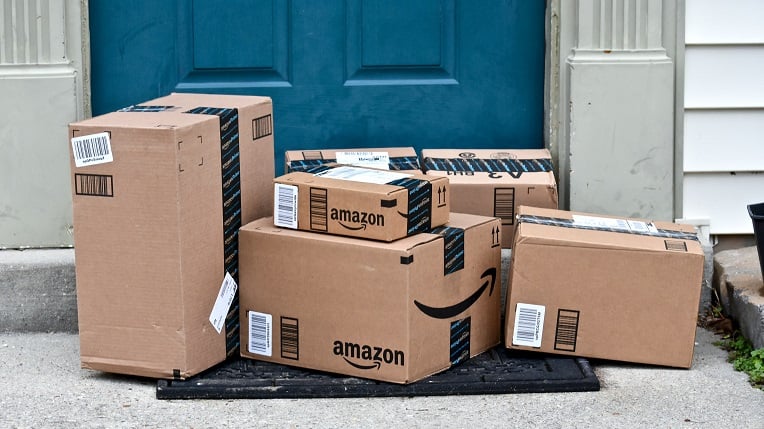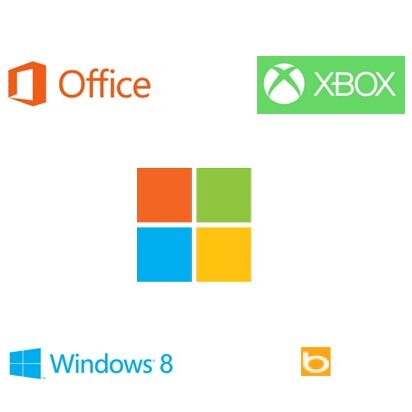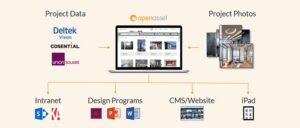What Is Brand Asset Management? All You Need To Know
Oct 11, 2024

In today’s fast-paced, highly competitive business landscape, maintaining a consistent brand presence is necessary for success. With the ever-increasing number of digital assets and the need for effective collaboration, organizations turn to brand asset management (BAM) systems for help. In this blog, we’ll explain how a brand asset management system helps your company succeed, and why you should invest in one.
What Is Brand Asset Management?
The asset management system market is projected to grow to more than $27 billion by 2025. The purpose of brand asset management (BAM) is to make storing, managing, and sharing digital brand materials easy.
Imagine your co-worker is asking you to share a brand asset from last year’s 4th of July campaign. Instead of spending time looking through endless folders and files, you can quickly find the asset with a brand asset management tool.
Brand asset management makes it easy for you to:
- Find and use old images
- Quickly share assets
- Search for specific images using keywords
- Never run out of storage space
- Control who can access assets
The term “brand asset management” also refers to “brand management software (BMS),” which gives you a complete place for all your brand assets by working as a single solution.
What Are Brand Assets?
Your brand identity is formed by numerous individual pieces of artwork, including files, images, documents, videos, and more. These assets collectively contribute to your brand, and ensuring their consistency and currency is a primary responsibility of brand asset management.
Brand assets can include the following elements:
- Brand name
- Logos (usually in multiple variations)
- Artwork
- Graphics
- Color palette
- Packaging
- Slogans or taglines
- Songs or sounds
- Videos
- Brand guidelines
- Mascots
- Typography
- Design elements
- Voice and tone
- Smells
- Flavors
- Celebrity endorsers and/or influencers
- Marketing material (business cards, letterhead, and collateral)
- Templates (webinars, sales videos, press releases, and other content)
As we can see, a brand is made up of various elements that are closely linked to your company. However, branding assets can be defined as anything that is distinctive to your company and is widely recognized and associated with it.
Every business has brand assets that shape how people view and engage with the brand. These assets strengthen the brand’s image and value, establish consistency, and align with customer expectations.
Examples of Brand Assets
When explaining brand assets, it can be helpful to see how other businesses stand out from the crowd. Examples of successful digital brand assets are everywhere and surround us in our daily lives. Incredibly organized and thoughtful brand assets catch the consumer’s attention and make it very difficult to ignore or resist engaging with the brand.
Here are three examples of brands that got it right:
1. Mailchimp

Mailchimp has successfully built its brand around Freddie, its quirky chimp mascot, which reflects the company’s playful, approachable tone. Freddie is more than just a logo—he embodies Mailchimp’s brand personality, which is friendly, casual, and humorous. The mascot is used strategically throughout Mailchimp’s marketing and user interface, adding a human touch to what could otherwise be a purely technical service.
In addition to Freddie, Mailchimp’s robust content style guide serves as a key brand asset. This guide outlines the brand’s unique voice and tone, ensuring consistency in how Mailchimp communicates across channels—from its website and social media to email campaigns and customer support. By consistently applying this guide, Mailchimp creates a distinct and memorable user experience that aligns with its core values.
2. Amazon

Amazon’s packaging has become an essential brand asset, making the company instantly recognizable even from a distance. The smiling logo on its boxes is iconic, delivering a positive, trustworthy image of the brand. Amazon also cleverly uses its shipping tape for promotional messaging, enhancing the consumer’s interaction with the brand before they even open their package.
This distinct packaging reinforces Amazon’s commitment to customer satisfaction and reliability. The packaging extends beyond physical recognition; it serves as a visual reminder of Amazon’s fast delivery and world-class logistics. Whether it’s on your doorstep or seen in passing, the Amazon package has become synonymous with convenience, speed, and customer service—core values that define the brand.
3. Microsoft

Microsoft’s four-color logo—orange, green, yellow, and blue—has become an iconic symbol of the company, instantly recognizable across its products and platforms. These colors are not just a visual asset; they symbolize Microsoft’s diverse range of products, with each color representing a different product category. The strict arrangement and specific shades of these colors further enhance brand recognition.
For example, the four squares in the logo align with Microsoft’s key offerings: Windows, Office, Xbox, and Bing. The consistency of these visual elements, applied across all of Microsoft’s digital and physical products, creates a cohesive identity that customers associate with innovation, reliability, and productivity. Microsoft’s use of its distinctive color scheme across software interfaces, product packaging, and even event branding has made it a global brand powerhouse.
4. Apple

Apple is known not only for its iconic bitten apple logo but also for its minimalist and consistent product design and packaging, which have become integral brand assets. The clean, white boxes with simple yet elegant typography, combined with a sleek design aesthetic, reinforce Apple’s reputation as a premium brand. Apple has elevated the “unboxing experience” into a highly anticipated event, as the presentation of their products—whether it’s an iPhone, MacBook, or AirPods—creates a lasting impression.
This careful attention to design extends beyond the physical product to the digital realm as well, with Apple’s user interfaces being instantly recognizable for their simplicity and ease of use. The consistency across every interaction with Apple products strengthens its identity as a brand that stands for innovation, quality, and design excellence.
5. Coca-Cola

Coca-Cola’s red background and the flowing, white script logo have made it one of the most universally recognizable brand assets. Since its introduction in the late 19th century, the logo and color scheme have remained largely unchanged, reinforcing brand continuity over generations.
Beyond the logo, Coca-Cola’s use of its signature glass bottle design has become a brand asset in itself, with its unique shape easily recognizable even in silhouette. Coca-Cola’s advertising campaigns further reinforce its identity, often linking the brand to happiness, sharing, and togetherness.
The brand’s strong visual identity is consistent across its packaging, digital presence, and advertising, making it one of the most iconic and enduring brands in the world. Coca-Cola also uses seasonal variations, such as holiday-themed cans and bottles, which add a unique touch while maintaining its core identity.
What Are Brand Asset Management Systems?
A brand asset management system helps you stay in control of all the different parts that come together to create a brand. It also helps make sure that everyone involved in building the brand uses resources wisely and efficiently.
In a week, 7 hours go to waste thanks to duplication of marketing work processes. As part of its important function, brand asset management systems ensure the secure storage, easy retrieval, and organized management of all brand assets, preventing duplication and disorder in handling these assets.
In addition to the fundamental features, BMS provides additional functionalities such as editable templates, customizable brand guidelines, advanced tools like a Logo Finder, and more. These extended capabilities consolidate all the necessary resources for effective brand management in one centralized platform.
DAM vs. BAM
People often confuse brand asset management (BAM) with digital asset management (DAM), but they are not exactly the same. BAM is a part of DAM that focuses specifically on assets used by brand and marketing teams for marketing purposes. DAM, on the other hand, includes all files used by an organization.
Brand asset management can be viewed as a smaller part of digital asset management because it specifically deals with digital assets related to a brand. While BAM focuses on maintaining brand consistency, DAM aims to enhance efficiency and team collaboration in managing various types of digital files.
Unlike DAM systems that generally store many assets in different forms and phases of completion, BAM is typically used to store carefully curated collections of finalized assets. For instance, a DAM system may store every version of a company’s brand logo from its beginning, while a BAM system would only keep the latest version of the logo.
Brand asset management systems are designed to organize digital assets by product or brand, making them ideal for retail or eCommerce industries. A project-based DAM is designed to store and organize digital assets by project or property, making it the top option for Architecture, Engineering, and Construction (AEC). They help AEC firms find their assets more quickly and help them create better proposals, faster. In fact, it is 5 times faster to find assets with a robust DAM system.
Ultimately, a BAM system is at the core of brand workflows and is specifically designed to handle brand management tasks. On the other hand, a DAM system caters to a broader range of needs and functionalities.
How Are Brand Asset Management Systems Helpful?
With the rise of the digital era, achieving brand consistency has become challenging.
Organizations without a centralized and reliable source of truth in the cloud find it difficult to keep up, and as more and more businesses move away from traditional media and towards digital channels, it’s important to invest in managing your digital brand assets.
A brand asset management platform is created to tackle the challenges of managing consistent digital assets for your brand, getting rid of any associated difficulties and frustrations.
By getting rid of mistakes and making the creation, approval, and retrieval of brand assets more efficient, a BAM platform helps you work faster and better. It also helps you make the most of your budget, ensuring that you can do more with less. In fact, 35% of organizations saw 10-20% growth in revenue due to consistent brand presentation.
Here are some helpful features you can leverage with a brand asset management system:
Manage Large Amounts of Media
Brand asset management systems excel at handling vast amounts of media, including high-resolution images, videos, audio files, documents, and other creative materials. These systems are designed to scale as your library of assets grows, ensuring that no matter how much content you accumulate, everything remains easily accessible and organized.
With cloud-based storage, you won’t have to worry about running out of space or losing track of essential media. Furthermore, these systems often provide compression and optimization features that allow you to manage heavy files without sacrificing quality or performance.
Store Everything in One Place
A brand asset management system serves as a centralized hub for all your creative assets, eliminating the need for scattered storage solutions or multiple platforms. This centralization means all team members, across departments or locations, can access the latest versions of key assets like logos, marketing assets, and product images.
Having everything in one place also enhances efficiency, as users no longer need to spend time searching through various folders or drives for the correct asset. Secure cloud storage ensures assets are safely backed up, while also making them accessible from anywhere with an internet connection.
Keep Branding Consistent
Maintaining brand consistency is crucial for building trust and recognition across all customer touchpoints. A brand asset management system allows you to implement strict controls over your brand’s visual and messaging guidelines. From ensuring logos are used correctly to setting specific color palettes and typography, the system allows you to customize templates and lock certain elements to guarantee that every asset produced aligns with your brand’s identity.
Additionally, style guides and usage rules can be embedded directly into the platform, ensuring every user—whether internal teams or external agencies—follows the same branding standards.
“With OpenAsset serving as the single source of truth for all visual assets, Arcadis IBI Group saw a marked improvement in brand consistency. The shift from relying on stock photos to using their curated library ensured authenticity in every piece of collateral.“—Arcadis IBI Group Case Study
Robust Security Measures
Security is a top priority for any business handling sensitive brand assets. Brand asset management systems offer advanced security features, including role-based access controls, encryption, and multi-factor authentication, ensuring that only authorized individuals can view, download, or modify assets.
For enterprises with global teams or external partners, these systems also provide granular permissions, allowing administrators to limit access to certain users or groups, and protecting proprietary or confidential media. Backup systems ensure that your media remains safe, even in case of data breaches or hardware failures, and detailed audit logs track who has accessed or modified files.
Effective Collaboration
Collaboration between teams is essential for timely and efficient creative production, and a brand asset management system enables seamless collaboration across departments, regions, and even with external partners. Whether you’re working with in-house teams or external agencies, assets can be shared instantly and securely.
Collaborative tools within the system allow for real-time feedback and approvals, helping avoid communication bottlenecks and ensuring projects stay on track. Additionally, some systems offer integration with project management tools, further streamlining workflows and making it easier to collaborate on large campaigns or projects.
Reliable Search and Retrieval
Finding the right asset quickly can save time and effort, especially when dealing with extensive media libraries. Brand asset management systems leverage metadata tagging, AI-driven search capabilities, and customizable filters to make search and retrieval fast and precise. Users can search by keywords, dates, file types, or even visual elements within images and videos, thanks to AI-powered image recognition.
This functionality ensures that assets are easy to locate, even if the user doesn’t know the exact filename, improving productivity and reducing frustration. Reliable search functions can also enhance version control by ensuring that users always find the most up-to-date and approved assets.
Benefits of Brand Asset Management for Your Business
In further detail, this is how a BAM can elevate your business:
Stay Consistent and Creative
A top-notch brand asset management system ensures that you don’t have to compromise between consistency and creativity. It serves as a central hub for brand management, allowing you to maintain flexibility while having the peace of mind that the important aspects are taken care of.
“OpenAsset’s robust features have streamlined processes, improved brand consistency, and facilitated quick access to high-quality assets, empowering Arcadis IBI Group to deliver exceptional results to its clients.“—Arcadis IBI Group Case Study
Improve ROI
To save money and improve your ROI, it’s important to focus on clear and consistent branding. When you repeatedly use your marketing content, people become more familiar with your brand. This familiarity is an important part of the customer journey. Successful global brands understand how to connect with their audience and create regular habits among consumers. Consistent brand assets align with consumers’ desire for a consistent, comfortable, and fulfilling lifestyle.
Moreover, BAM systems enhance productivity and allow you to make efficient use of resources, resulting in your company saving money.
Strong Brand Identity
Brand asset management enhances the identity of your brand, ensuring that it looks, feels, and behaves consistently with customers. It strengthens the overall coherence and unity of your brand’s visual and experiential elements.
A strong brand identity is based on clear and specific branding guidelines. These guidelines should include instructions for using brand assets, such as images, and specify when and how each asset should be used. The more detail you can provide related to your brand assets, the more consistent and unified your brand identity will be.
Stay Away From Old Branding
Brand guidelines play a crucial role in preventing any misrepresentation of your brand. They are particularly valuable when you have a large team or multiple stakeholders involved in using and modifying your brand assets. Clear guidelines can streamline the production of content. It’s essential to maintain consistency and keep every design element of your brand assets, such as colors, logo size, and orientation, updated to avoid the use of any old branding.
Streamline Workflows
Research shows that employees spend around 4.2 hours per day searching for relevant information, which equates to over half of an average work day. However, with a brand asset management system, teams save crucial time by bringing together brand-specific information in one central location.
Moreover, BAM systems enhance team collaboration and minimize errors and miscommunication. This ensures every team member has quick access to the most updated versions of the company logo and brand colors.
The result is a more unified creative process, leading to improved outcomes for various branded projects.
How to Organize Brand Assets
Effectively managing your digital assets can become a significant drain on resources. Marketing teams that prioritize the organization of their brand assets recognize its direct impact on success. It’s challenging to achieve success in any creative role without proper brand asset organization.
So, how can you effectively organize your brand assets? Brand asset management is an essential foundation for productivity. It’s the foundation that enables and enhances all your other work. By undertaking the step-by-step process of organizing your brand assets, you will soon begin to benefit from effective brand asset management.
Here are three organizational tips to get more out of your digital asset management system:
1. Choose Your Assets
Start by conducting a comprehensive evaluation of your existing brand assets and choosing the assets you want to store. Take note of what assets you currently possess, their locations, and whether they align with your latest branding guidelines.
Ask yourself the following:
- Are these files necessary for the entire team to have access to?
- Do you use the files regularly?
- Are these files the most up-to-date versions?
2. Start Organizing
After you finish selecting your assets, the following step involves using your BAM system to establish a centralized storage location for all the chosen assets.
This step should include:
Creating a Folder Structure
Organizing images and other files into categories will facilitate seamless browsing in the future
Applying Metadata Labels to Images
Assign relevant keywords to each image to enhance searchability.
Building a System for Alternates and Versions
Establishing links between alternate versions and using metadata to provide context on how each version should be used ensures alignment and minimizes confusion.
Reducing File Numbers by Downloading
With a BAM system in place, every asset will appear only once, enabling users to choose the desired download format.
3. Ensure Ongoing Organization
After you organize your files into your brand asset management system, these key functionalities can keep your library organized. Features may include:
- Branded templates
- Guest upload links
- Duplicate file detection
- Review and approval processes for new asset uploads
Having access to these features through a BAM system also helps improve brand consistency and version control by guaranteeing that your users access and use the correct versions of the company’s assets.
Brand Asset Management FAQs
Still have questions on BAM? We have answers:
What Is Brand Asset Management?
Brand asset management (BAM) is the process of organizing, storing, and accessing a company’s digital brand assets like logos, images, and marketing materials in a centralized system. It helps businesses maintain consistent branding across all platforms and touchpoints.
What Is the Difference Between Brand Asset Management and Digital Asset Management?
Brand asset management (BAM) is a subset of DAM that focuses specifically on managing assets related to a company’s branding, such as logos, fonts, and marketing materials, ensuring consistency across all channels. Digital asset management (DAM) is broader, handling all types of digital files—including documents, images, videos—used in various contexts within an organization, not just branding.
Ultimately, BAM systems are designed specifically for brand management workflows, while DAM systems cater to a broader range of organizational needs and asset types.
Why Is Brand Asset Management Important?
BAM ensures brand consistency by making it easy to find and use the correct assets across teams and channels. It also saves time and reduces errors by providing a centralized source for approved brand materials.
What Are the Best Practices for Brand Asset Management?
Best practices include centralizing all assets in one system, ensuring that files are up-to-date, and setting clear access permissions. Additionally, using metadata for easy searching and integrating brand guidelines within the system are key for consistency.
Who Uses Brand Asset Management?
Brand managers, marketing teams, designers, and other key stakeholders involved in creating or managing a company’s brand assets rely on BAM. It ensures everyone has access to the latest versions of approved materials for consistent branding.
What Industries Does Brand Asset Management Apply To?
BAM applies to industries such as marketing, retail, healthcare, real estate, tech, and media, where managing digital assets is critical for brand visibility. However, industries like Architecture, Engineering, and Construction (AEC) also benefit from BAM for brand consistency and creating winning proposals. Essentially, any industry that uses digital assets to communicate its brand can benefit from BAM.
What Does a Brand Asset Manager Do?
A Brand Asset Manager is responsible for organizing, maintaining, and distributing a company’s brand assets, such as logos, images, and marketing materials, to ensure consistent branding across all platforms. They manage the digital asset management system, collaborate with marketing and design teams, and ensure that only approved and up-to-date assets are used in promotional efforts.
How Much Does a Brand Asset Management System Cost?
The cost of a BAM system varies depending on the features and scale, typically ranging from hundreds to thousands of dollars per month. Pricing is often based on the number of users, storage space, and advanced capabilities.
What Software or Tools Are Required for Brand Asset Management?
A digital asset management (DAM) platform is typically used for BAM, allowing businesses to store, organize, and distribute their brand assets. Many systems also include collaboration and workflow tools to streamline processes across teams.
Can Brand Asset Management Systems Integrate With Other Software Tools?
Yes, most BAM systems can integrate with other software like project management tools, content management systems (CMS), and marketing automation platforms. This integration allows for smoother workflows and improved collaboration across departments.
Can Any Business Size Use BAM?
Yes, BAM systems are scalable, making them suitable for businesses of all sizes, from small startups to large enterprises. These systems can adapt to the needs of the company, ensuring efficient management of brand assets regardless of scale.
How to Manage Your Digital Brand Assets
Investing in a DAM that can provide all the features required for managing brand assets is vital for your firm. And when it comes to brand management for AEC and real estate professionals, OpenAsset provides a high-quality software solution. As the only DAM system designed specifically for AEC, we make it easy to find the digital brand assets you need.
With OpenAsset, it’s easy to find assets by project or person using keywords or file type. Our secure platform also helps you protect your digital assets by keeping them safe from unauthorized access and accidental deletion. You can also easily share files with team members, clients, and partners using controlled access to files.
To ensure brand consistency and manage your ever-growing number of images, videos, logos, and media in your digital asset library, request a demo with us and learn how OpenAsset can help you manage your digital assets today.





